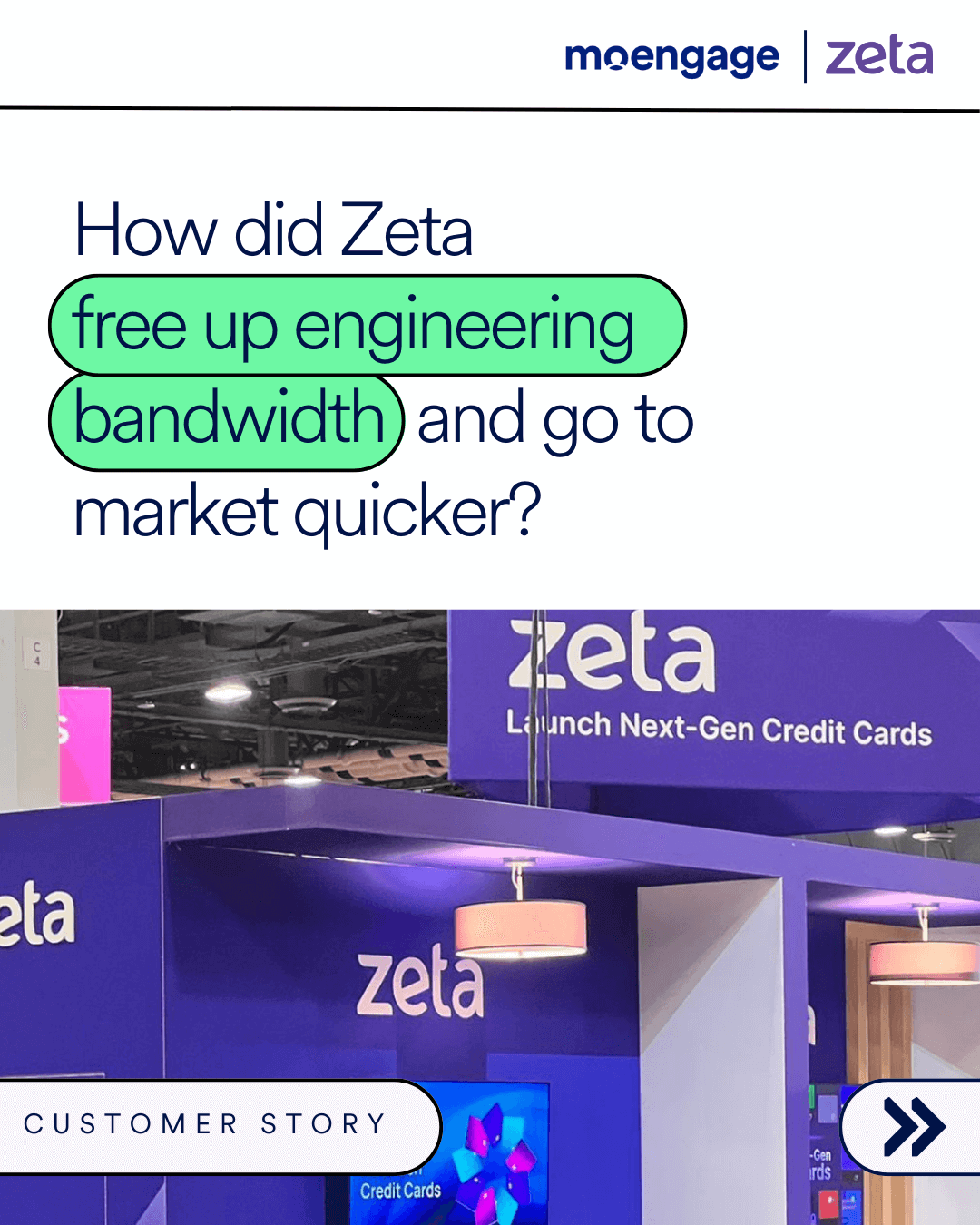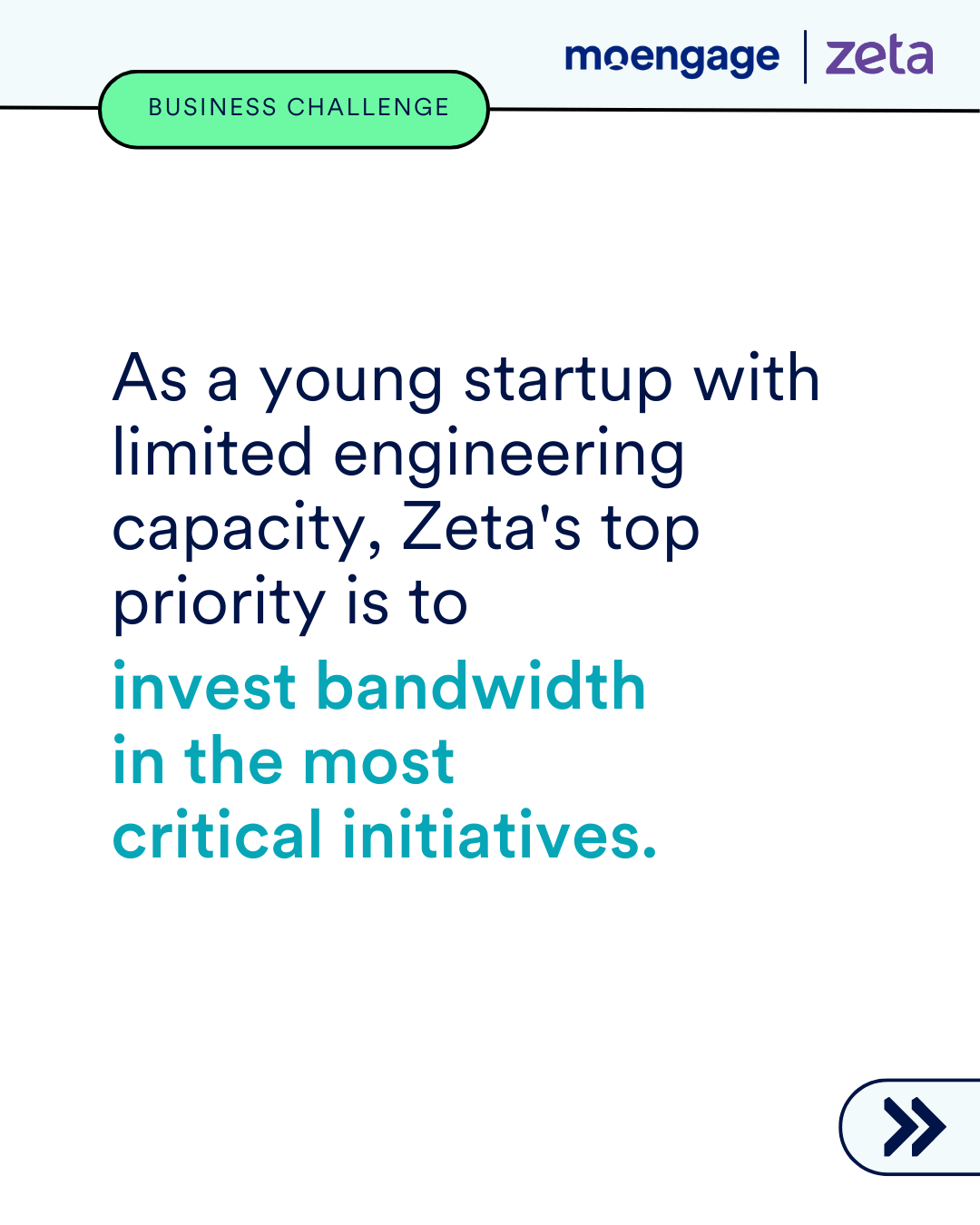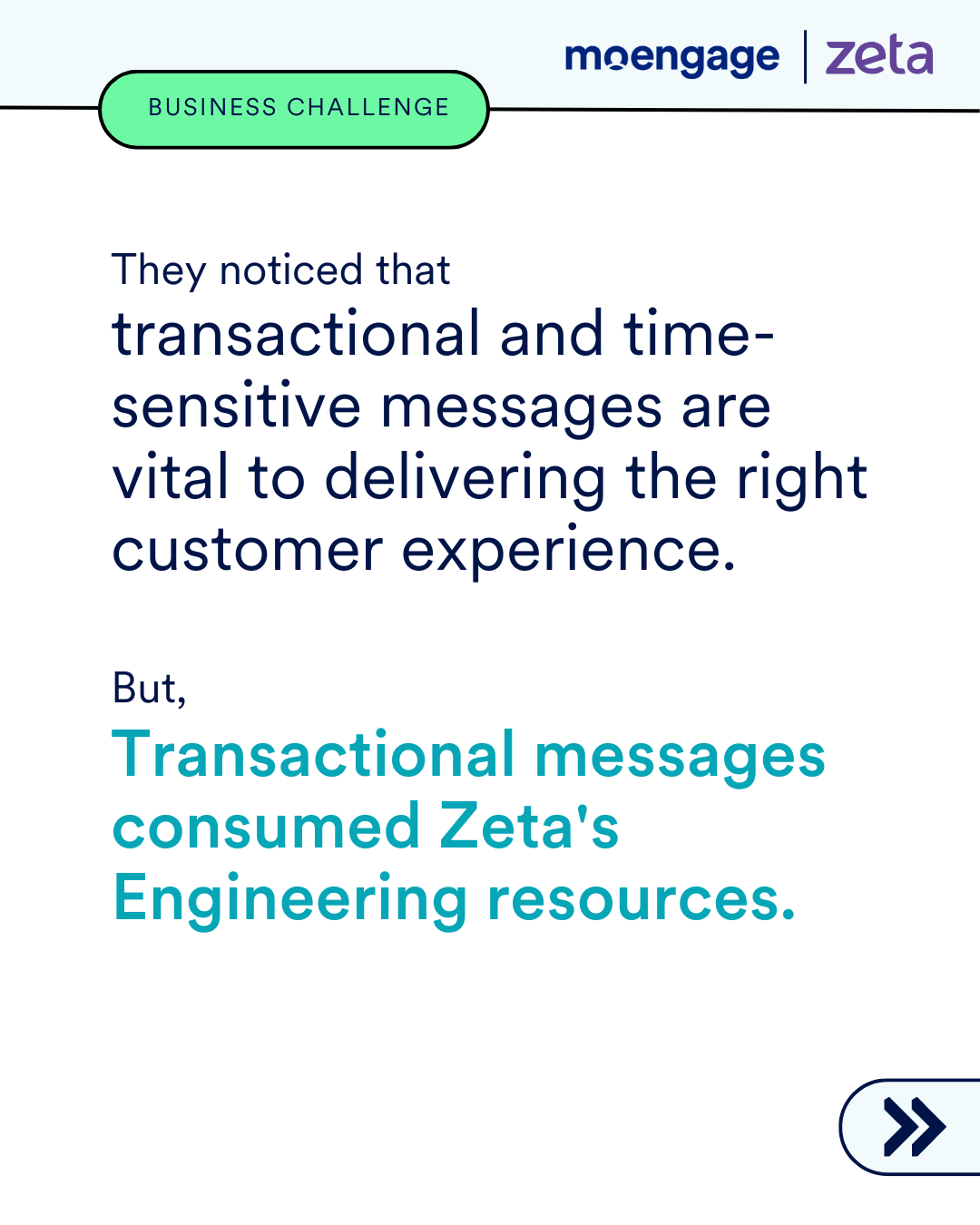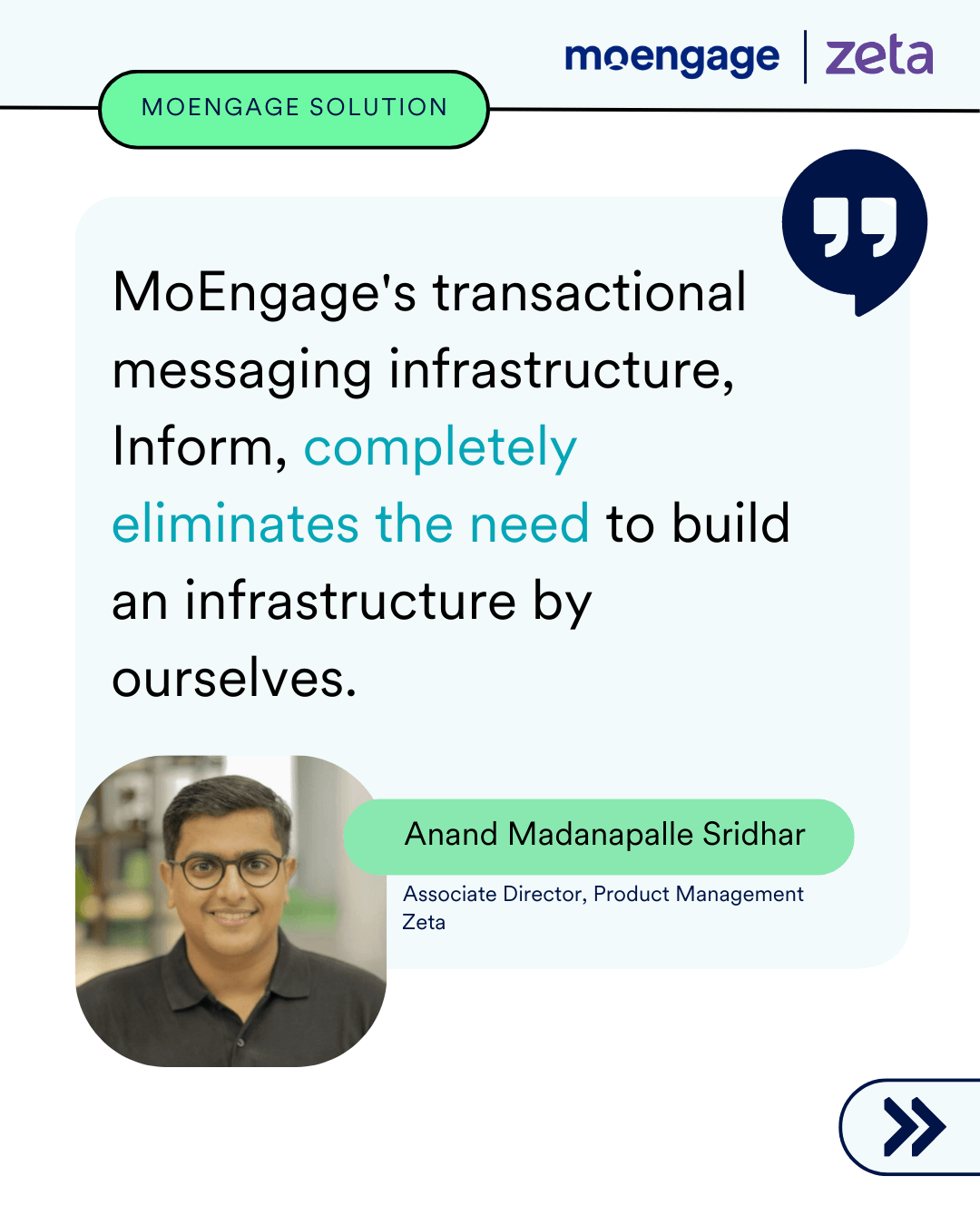Introducing A Scalable And Reliable Real-Time Transactional Messaging Infrastructure
Discover a new way to send transactional messages across multiple channels in real time with MoEngage Inform!
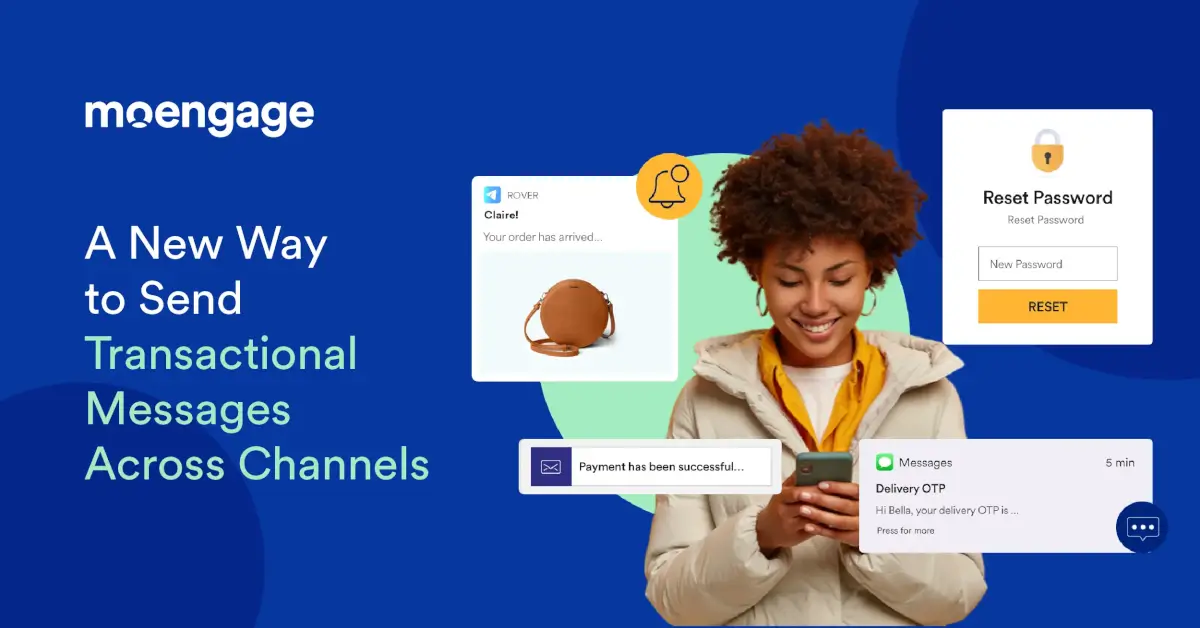
Reading Time: 7 minutes
| 👉 Download and share this PDF about MoEngage Inform with your team! |
In today’s fast-paced digital world, messaging platforms are integral to everyday lives.
Consumers rely on multiple messaging channels, from WhatsApp to Emails to SMS, to receive critical transactional alerts from brands. They expect immediate responses and updates on important events at their fingertips.
But building a reliable, scalable, and secure messaging system is easier said than done.
As organizations grow, messaging and communication needs become more complex. Adding multiple channels requires a dedicated team to maintain and update messaging infrastructures. Integrating vendors and channel providers need about 8 weeks of Engineering efforts.
This is where MoEngage Inform steps in.
What Is MoEngage Inform?
MoEngage Inform is a unified messaging infrastructure that enables you to build and manage transactional alerts across channels through a single API.
Using MoEngage Inform, brands can deliver critical messages to customers in real time. These include alerting customers when a package arrives, sending OTPs for approving transactions or logging in securely, cab arrival updates, or password reset requests.
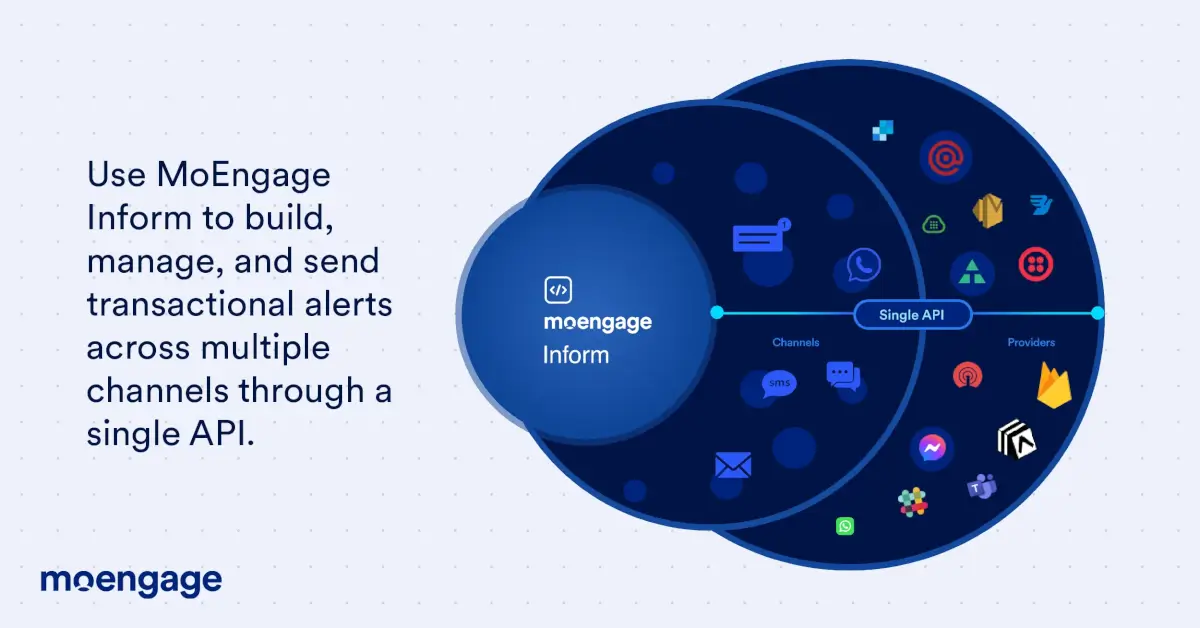
Why Did We Build A Transactional Messaging Infrastructure?
1. Maintaining a messaging system requires significant Engineering bandwidth
Product-centric teams have no control over the content or logic of transactional alerts in current messaging infrastructures.
Setting up new alerts, editing or updating existing alerts, fetching performance data, adding new channel support, and optimizing alerts for new templates – current messaging systems require the Engineering team to step in for all, and more.
With core activities coming up frequently, Engineering teams are often forced to deprioritize these requests.
We have a notification microservice. It is ‘non-core’ to us. We have new features planned every quarter, and often, changes need to be made which require testing and deploying cycles. I would want to replace this system with an easy-to-use notification infrastructure without having to dedicate development bandwidth to building and maintaining it perpetually.
If only sudo commands worked irl 🥲. Relevant XKCD:

2. Lack of data and insights about transactional messages
Insights-led Engagement is the modern marketer’s approach to efficient Customer Engagement. Sending communication to customers without insights is like running a marathon with a blindfold – you are very likely to bump into hurdles and harm your overall goals.
Product and Marketing teams need easy access to alerts’ performance, how customers react to them, and what impact alerts have on business metrics such as LTV, revenue, or retention.
But when collecting data and insights requires the involvement of functions with stretched deadlines such as Engineering, it creates friction. Friction leads to delays. And delays lead to lost opportunities to grow.
3. Recurring broken customer experiences and a lack of a unified view
Did you know that 22% of consumers get frustrated when brands send them too many or too few messages? In fact, consumers are less frustrated when brands fail to personalize their experiences than missing out on critical alerts (source)!
Since transactional messages are siloed from promotional messages, there is a lack of a unified view of all alerts and notifications received by customers. Because of this, teams cannot identify if a customer has already received an alert on one channel and don’t automatically stop the same message from going on to other channels.
We don’t get alerts for when critical notifications break unless our customers tell us they didn’t receive an update.
This leads to broken experiences and frustrated customers who will remember your brand for the wrong reasons.
4. Messaging infrastructure is complex and expensive to build
Building a high-performance, reliable notification engine requires multiple iterations. Modern messaging systems need to evolve with consumer preferences and equip marketers and product owners to send personalized notifications without annoying customers.
Additionally, the infrastructure should be able to scale without effort so you can seamlessly add new communication channels, such as WhatsApp Business, to your omnichannel strategy.
Developing and maintaining a notification engine is easier said than done. You need to coordinate with multiple functions – Marketing, Design, Product, and Engineering, to make sure the notification engine works seamlessly. With development bandwidth constraints, making a reliable notification delivery system meant re-writing the service repeatedly every 6 months or 1 year.
Why Do Brands Need MoEngage Inform?
If you found yourself nodding your head while going “hmm..” as you read through the above points, our latest feature, MoEngage Inform, will be a breath of fresh air.
With MoEngage Inform, you can build and manage transactional alerts across channels through a single API.
MoEngage Inform saves time, is reliable, can scale with minimum effort, and gives meaningful insights to help you grow your North Star Metrics.
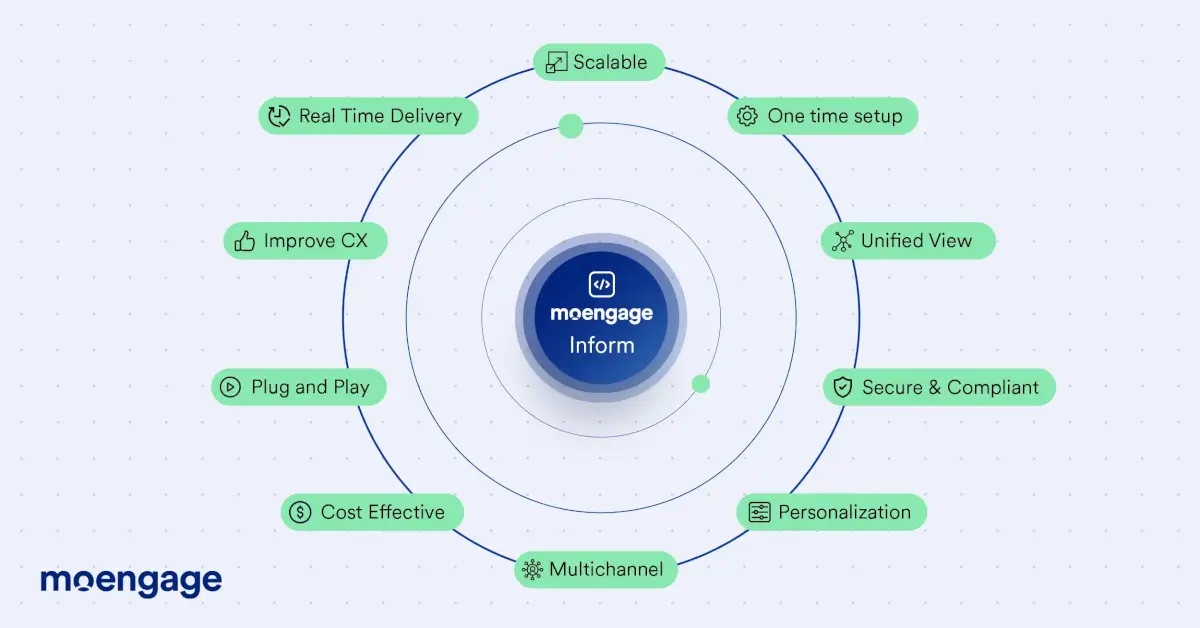
Here’s what makes MoEngage Inform the most reliable messaging infrastructure for your brand:
- Plug and play: MoEngage Inform fits seamlessly with your existing stack with minimum Engineering effort.
- Improve Customer Experience: With Smart Orchestration, stop sending the same alert multiple times on different channels if a customer has already interacted with your message.
- Multichannel: Deliver important alerts via multiple channels, such as Email, Mobile Push Notifications, SMS, WhatsApp, Web Push Notifications, In-app Messages, and more, through a single API.
- Unified view: Analyze all alerts in one centralized location and drive collaboration across multiple functions – Marketing, Design, Product, and Engineering. Get complete visibility into the logic, content, and timing of alerts that are up and running, on the go.
- One-time setup: The Inform API is a one-time setup API and does not need regular check-ins by the Engineering team, freeing up their resources and bandwidth.
- Real-time delivery: The MoEngage Inform API is built for high speed and reliability. With the average message delivered in under 5 seconds, your customers will receive critical alerts in time.
- Secure, Scalable, and Reliable: Since the Inform API is a part of the MoEngage ecosystem, it adheres to global compliance and regulations such as GDPR, CCPA, ISO 27001:2013, SOC 2 Type 2, CSA STAR, and more. With MoEngage Inform, you can seamlessly add new channels or vendors, and switch between the vendors without having to redeploy code.
- Cost-efficient: Sending alerts on multiple channels leads to increased costs, especially when a customer has already received an alert on one channel, and you continue to send messages on other channels. The MoEngage Inform API cuts down on unnecessary spending by automatically stopping once your customer engages or converts.
- Built-in personalization: With MoEngage Inform, you can send relevant alerts across channels.
- Fallback mechanism: MoEngage Inform’s built-in fallback mechanism automatically picks other vendors and channels upon a delivery failure.
This is what Anand Madanapalle Sridhar, the Associate Director of Product Management at Zeta, a next-gen banking tech company in India, had to say:
How Is MoEngage Inform Different From Current Transactional Messaging Infrastructures?
Without MoEngage Inform, Engineering teams need to build and maintain several APIs and work with different vendors for each communication channel.
Most often, building transactional alerts for each channel requires a dedicated workflow, making the entire process difficult and time-consuming to scale.
Here’s what current messaging systems look like:
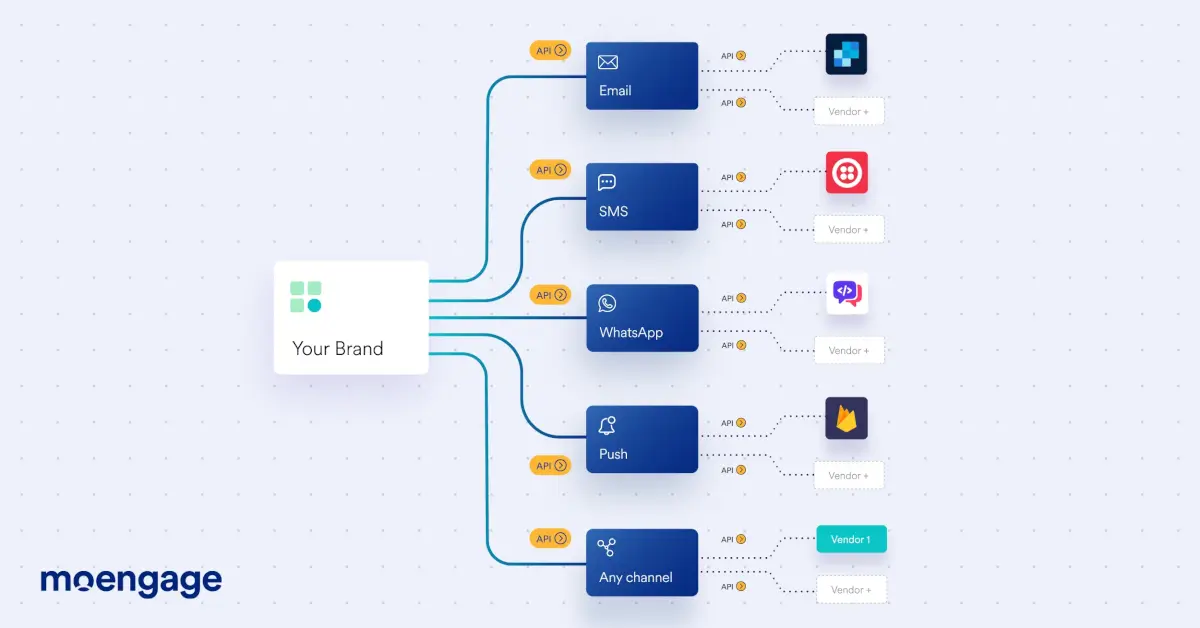
And, here’s how the MoEngage Inform API works:
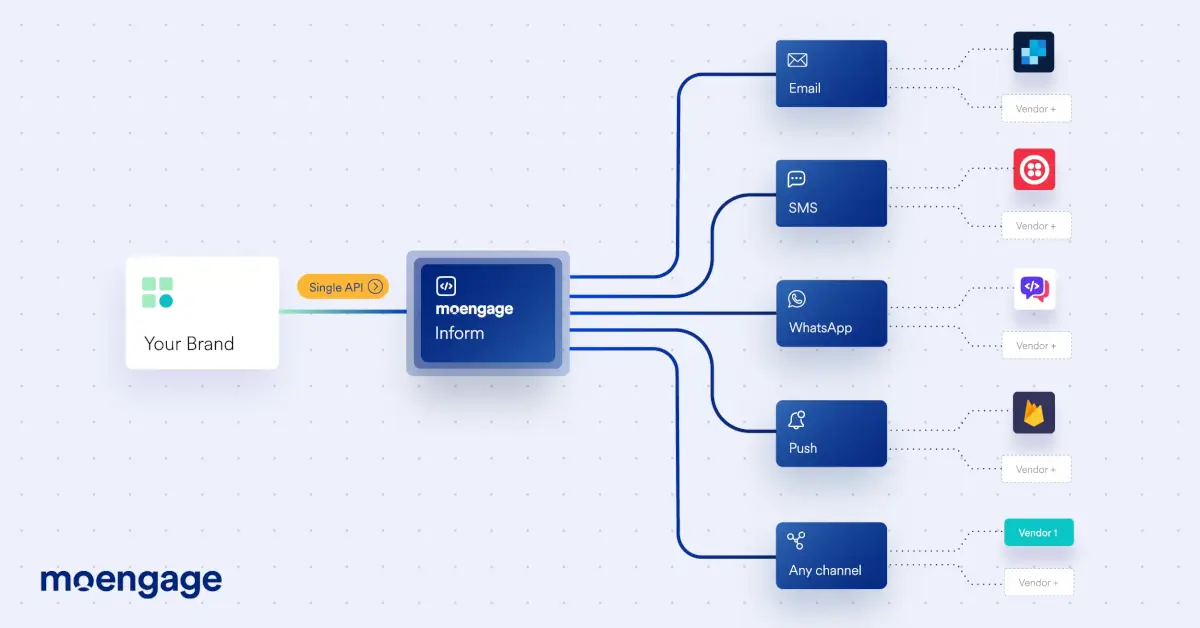
With a single API and a one-time setup, you can set up a reliable and scalable messaging infrastructure to send critical transactional alerts to your customers.
With MoEngage Inform, you can add new communication channels in minutes, seamlessly switch between vendors, and manage alerts on multiple channels. The MoEngage Inform API supports over 30 service providers, with SDKs available in all major languages.
MoEngage Inform’s Priority Logic allows you to set rules such as channel preferences and delivery prioritization. It also gives you the flexibility to add conditional statements to define the priority logic.
You can easily update/edit message content and design with MoEngage’s pre-built templates and WYSIWYG editors across Push Notifications, Emails, and Text Messages (SMS).
How Can Brands Use MoEngage Inform?
Financial Services and Fintech
- Fraud prevention and security alerts
- Transactional alerts (money debited/credited)
- Wire transfer updates
- Overdraft/withdrawal limit reached
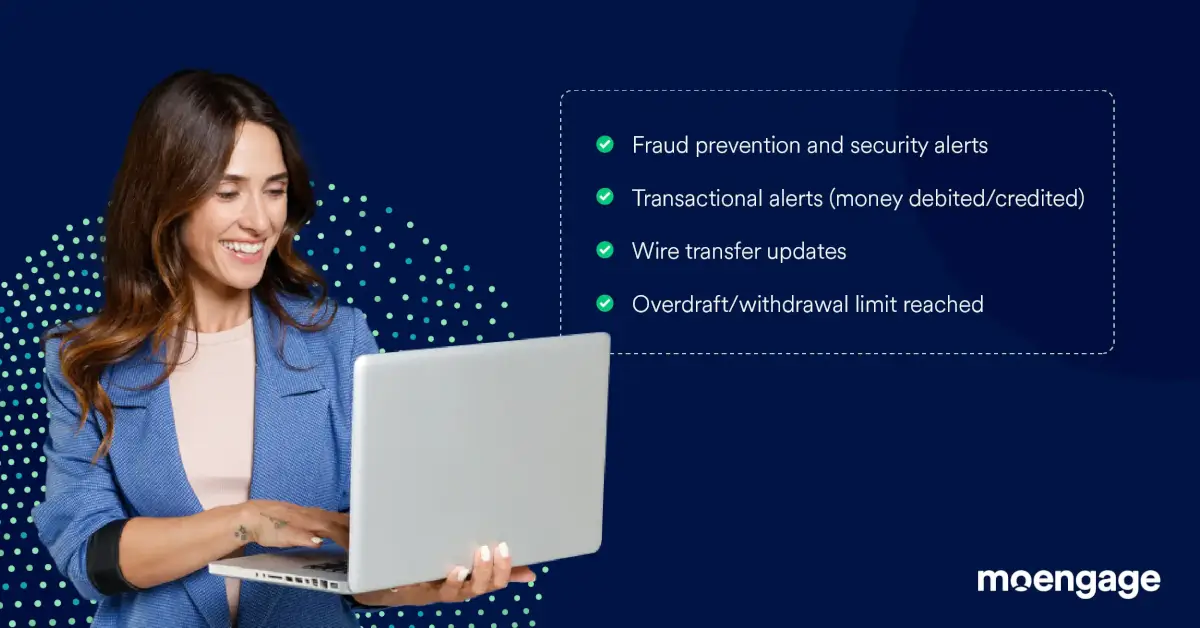
Media & Entertainment (OTT) and Digital Publications
- Subscription purchases or upgrade alert
- Trial expiration message
- Alert when a new profile is created or added
- Live score updates
Lifestyle and Health & Fitness
- Trial or membership expiry alert
- Fitness milestones achieved (like 10k steps recorded)
- Welcome message on signing up
- Drop in heartbeat or oxygen levels
- Loud environment alerts
Retail & E-commerce
- Order confirmations
- Shipping updates and alerts
- OTPs to receive packages
- Failed payment alert
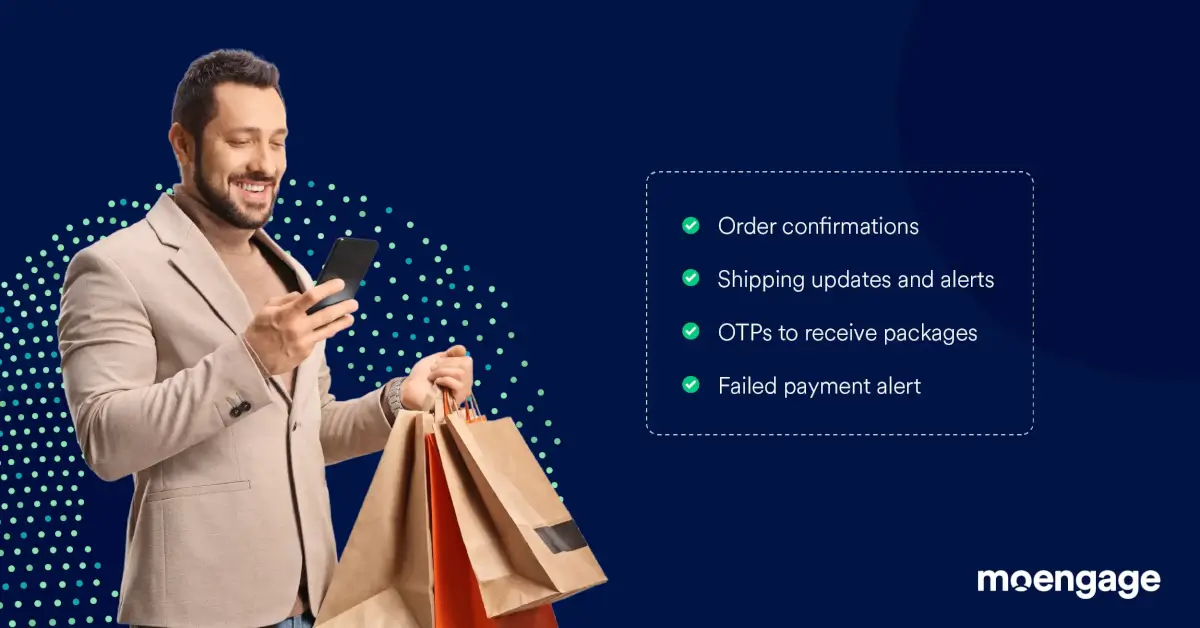
Telecommunication
- Data limit notifications
- Trial or subscription expiry alerts
- International roaming updates
Ed Tech
- Course completed
- Course purchased alert
- Trial or subscription expiry
Travel & Hospitality
- Flight changes or updates
- Cab confirmation and arrival
- Table availability alerts
Conclusion
Building a transactional messaging infrastructure with MoEngage Inform ensures you have a reliable, scalable, and secure system while retaining complete control over functionality. This allows you to focus on your core offerings instead of building a backend infrastructure so that you can deliver critical transactional alerts without breaking customer experiences.
MoEngage Inform is an all-in-one transactional messaging solution for your brand’s transactional alerts across multiple channels through one single API.
Brands can use the Inform API combined with MoEngage’s Insights-led Customer Engagement Platform to support all of their transactional notifications and campaigns and get a holistic view of their customer’s journey.
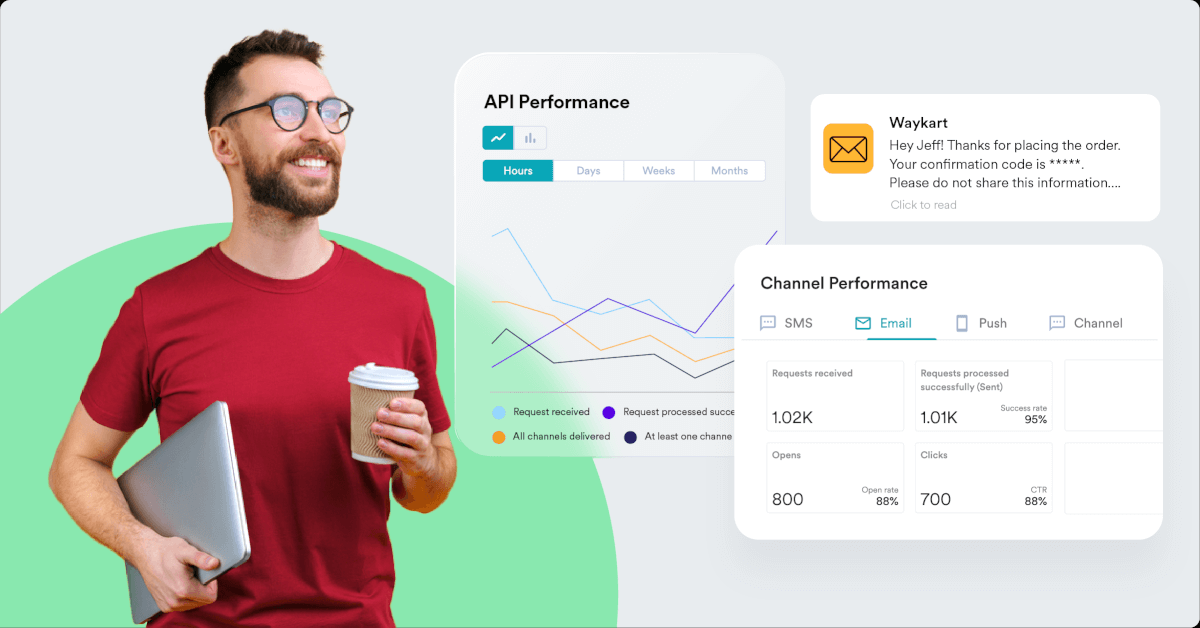
If you’re an existing customer, reach out to your favorite Customer Success Manager to get early access to MoEngage Inform. If you’re new to MoEngage, connect with an expert to learn more here.






